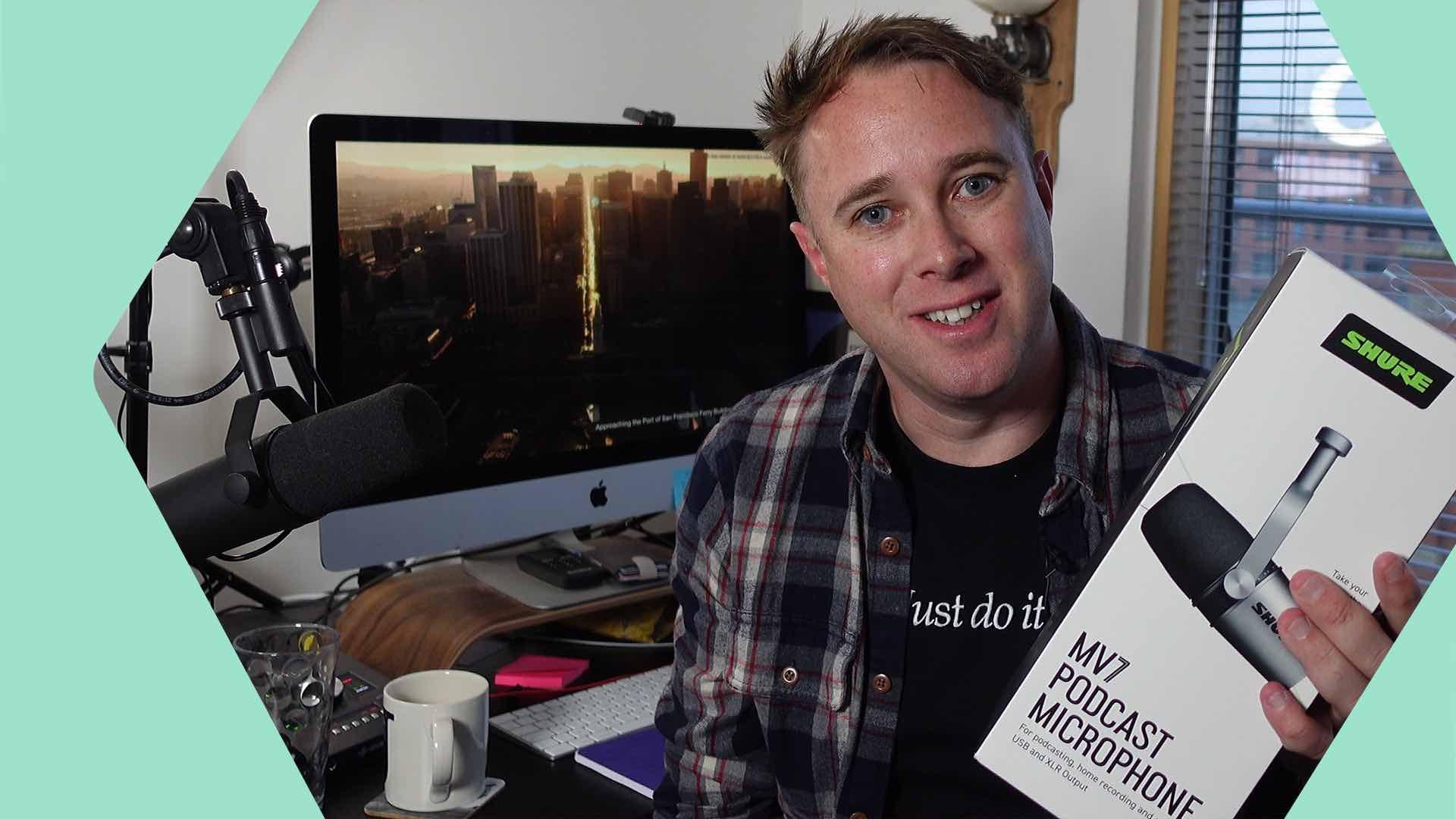Aston Origin vs Aston Spirit Mic Shootout
Aston has set itself apart by producing excellent mid-priced mics like the Origin and Spirit. But how do these two popular models compare when pitted against one another?

The Aston Origin and Aston Spirit are both top-tier microphones within the mid-price market. Obviously, it doesn’t take a genius to figure out that these mics are very similar. But there are some subtle, and not so subtle, differences between them that you should know before you invest.
Aston Origin vs Aston Spirit

Purchase Links
Choose your microphone. From the original to the hybrid, both deliver uncompromising audio quality for any professional radio broadcaster.
- Aston Origin (Amazon US 🇺🇸)
- Aston Origin (Amazon UK 🇬🇧)
- Aston Spirit (Amazon US 🇺🇸)
- Aston Spirit (Amazon UK 🇬🇧)
Build Quality Like an Armoured Tank
First off, let’s look at design. Aston’s company tagline is “The Art of Audio”, which definitely shines through in both the Origin and the Spirit. They’re bold, distinctive, and wouldn’t look out of place in any recording setup (or industrial factory).

The main difference that jumps out is the size. The Origin looks like a mini version of the Spirit. That’s because it basically is. This makes the Origin the more easily portable of the two. You could almost fit it into your back pocket, although that’s not recommended.
Size aside, the build quality is impressive, to say the least. Both have significant weight to them and share an industrial style and feel. You won’t have to worry about these two falling apart any time soon. They even have their names engraved on the side of the metal casing to give them a classy flourish.
Both mics share the same headstock, featuring a waveform spring shield and wire mesh just behind that acts as an internal pop filter. We’ve been critical of built-in pop filters before. And it’s no exception here. It works quite well when you maintain distance from the mic, but does fail a bit when you get too close.
So if you’re using either of these mics regularly, we’d recommend using one of Aston’s own mic shields, which are much more effective.
Major Differences in Audio
Both microphones are XLR condenser mics, so if you want to use them you’ll need 48v phantom power from either a broadcasting desk or audio interface. As you would expect from condenser mics, both pick up a great amount of detail in your voice.
Perhaps unsurprisingly, the difference in sound between the two mics is quite subtle. What difference in quality there is can be put down to the components. The Origin contains a gold evaporated capsule, whereas the Spirit has a double-sided gold evaporated capsule.

What this means is that they both have a great level of articulation and sensitivity, but the Spirit is a bit better at picking up low end. So, if you’ve got a booming, Barry White-esque voice, you may want to think about grabbing the Aston Spirit.
Both microphones possess the kind of quality that makes them fantastic for broadcasting, podcasting or anything else you can do with your voice. They can pick up loads of detail in the upper regions, thanks to that fancy gold evaporated capsule, and overall they deliver a nice warm and versatile sound.
Choosing Value for Money
Being the bigger and more expensive of the two, you’d expect the Spirit to have more features. And that is indeed the case. You do have more options when you’re recording.
The Origin retails for around $250/£200, while the Spirit retails for $330/£230. So for that bump in price, you get the richer low end, along with a few extra features that might come in handy.
There’s a gain switch, which is handy for handling loud noises from instruments or preventing peaks when speaking close to the mic. The Spirit has 3 options - neutral, -10dB, and -20dB, while the Origin only has neutral and -10dB. So if you’re a creative individual and you’re planning to record music and broadcast, the Spirit gives you an extra bit of flexibility.

The Spirit also allows you to choose from three different polar pattern settings - omnidirectional, which picks up the sound from all around, figure of 8, which picks up sound from the front and back of the mic, and the standard cardioid setting which picks up sound from the front of the mic only. This makes it ideal not just for the studio, but anywhere else you could take it, such as a live event, public interview and more.
In comparison, the Origin only comes with the standard cardioid polar pattern. So again, the Spirit has a greater degree of flexibility to handle different sorts of recording environments.
Verdict
So the big question is, which one should you buy? Well, there are a few factors to take into consideration. If you’re keen to keep the price to a minimum, the Origin is a fantastic broadcasting mic. It may not have all the bells and whistles, but it’s rugged, compact, and records clean and crisp audio. And if you’re going to be primarily recording female voices, the lack of fullness in the low end won’t be a problem.

But if your budget allows, we’d advise going with the Spirit. The sound quality it delivers is first-class - it’s able to pick all kinds of voices in a nice balanced way. And the additional feature settings make it more versatile - which is worth keeping in mind if you often record your podcast in different locations.
When all is said done, creating great radio is more than just choosing the right hardware. You need experience, support, and a solid place to manage your shows. All of which Radio.co offers. But before jumping in both feet first, try things out to see how the platform can work for you.





